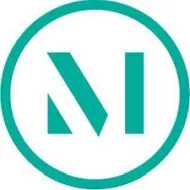- with readers working within the Insurance industries
On August 8, the Centers for Medicare and Medicaid Services (CMS) posted a long-anticipated proposal to revamp the way Medicare pays ambulatory surgery centers (ASCs) for the facility component of surgical services furnished to program beneficiaries. The new payment system, once implemented, will profoundly change how and how much Medicare pays ASCs.
Key Aspects of the Proposed Changes
Background
This payment system has been only minimally updated since the inception of the Medicare ASC payment benefit in 1982. In recent years, it has come under considerable criticism from policymakers and the ASC community for being out-of-step with current ASC costs and practices. Responding to these concerns, Congress set a course for a new ASC payment system with provisions included in the Medicare Modernization Act of 2003 that directed CMS to develop and implement a new payment methodology by January 1, 2008.
Procedure Classification and Payment
CMS is obliged by statute to implement the new payment system in a budget-neutral manner so that payments under the new payment methodology neither increase nor decrease aggregate Medicare spending for ASC services. As such, CMS proposes to use a conversion factor of $39.688 multiplied by the ASC relative weights to determine the payment for an individual procedure. By comparison, CMS’s proposed conversion factor for hospitals under the outpatient prospective payment system is $64.013. Consequently, CMS is proposing to pay ASCs approximately 62 percent of what it pays hospitals for corresponding procedures in 2008.
The final ASC conversion factor for 2008 likely will vary as other factors, such as the hospital outpatient relative weights and utilization data, change and as CMS revises its overall methodology in response to comments it receives.
It is important to note that the 62 percent relationship would not be permanent. Under the proposed methodology, CMS would recalculate the two conversion factors each year, and the hospital-ASC payment relationship would vary accordingly.
Payment "Packaging"
Transition
Updates to ASC List
The Medicare Payment Advisory Commission (MedPAC), a non-partisan panel that advises Congress on Medicare payment matters, has been recommending CMS to replace the current "inclusive" approach to identifying procedures with an "exclusionary" approach. That is, rather than limiting payment of an ASC facility fee to a list of procedures that CMS specifies, Medicare would instead allow payment to an ASC facility for any surgical procedure, except those that CMS explicitly excludes from payment.
CMS is now embracing these recommendations and proposing that, under the revised ASC payment system to be implemented January 1, 2008, Medicare would allow payment of an ASC facility fee for any surgical procedure performed at an ASC, except those surgical procedures that CMS determines are either not safe when furnished in an ASC or that require an overnight stay. CMS is proposing to expand the ASC List by more than 760 procedures but to exclude nearly 270 procedures because of perceived safety-related concerns.
Office-Based Procedures
Implications for ASCs
Overall, CMS’s proposed new payment methodology is a substantial improvement over the existing payment system. In fact, the major ASC trade associations have been urging CMS to base ASC payments on hospital rates for nearly a decade. ASC payment groups would increase from the current 9 to 221, while payment rates would range from $3.68 to $16,146.03, making for a much more accurate relationship between ASC costs and payment, in most instances.
Nonetheless, the impact is clear for most ASCs. ASCs specializing in orthopedic or ophthalmology procedures would benefit substantially under the proposed new system, while those facilities specializing in gastroenterology, urology and pain management would likely see dramatic (more than 30 percent) revenue decreases under the new system. Following is a chart illustrating the current and new payments for five high-volume ASC procedures.
|
Code |
Descriptor |
Current ASC Payment |
Proposed CY 2008 ASC Payment without Transition |
|
66984 |
Remove cataract |
$973 |
$935 |
|
45378 |
Diagnostic colonoscopy |
$446 |
$350 |
|
62311 |
Inject spine l/s (cd) |
$333 |
$235 |
|
52000 |
Cystoscopy |
$333 |
$267 |
|
64721 |
Carpal tunnel surgery |
$446 |
$704 |
The proposed changes to the ASC List are also welcome news for ASCs because they would greatly expand the number and range of services ASCs can furnish. However, CMS’s proposal to cap payment for "office-based" procedures could greatly reduce the ability of many ASCs to furnish these services. Nearly 360 procedures could be subject to this payment cap. Worse yet, CMS suggested that it might instead simply exclude procedures that it regards as "office-based" from the ASC List. Fewer than 400 procedures would be added if CMS excludes procedures based on site-of-service or resource-utilization-related criteria.
Changes Effective January 2007
In the meantime, CMS intends to make a several changes effective January 1, 2007. First, CMS is required by the recently enacted Deficit Reduction Act of 2005 to cap ASC payment at the corresponding amount paid to a hospital for the same procedure. In other words, effective next year, Medicare cannot pay an ASC more than it pays a hospital for a procedure. Additionally, CMS is proposing to add 14 procedures to the ASC List effective January 1, 2007.
The content of this article is intended to provide a general guide to the subject matter. Specialist advice should be sought about your specific circumstances.

